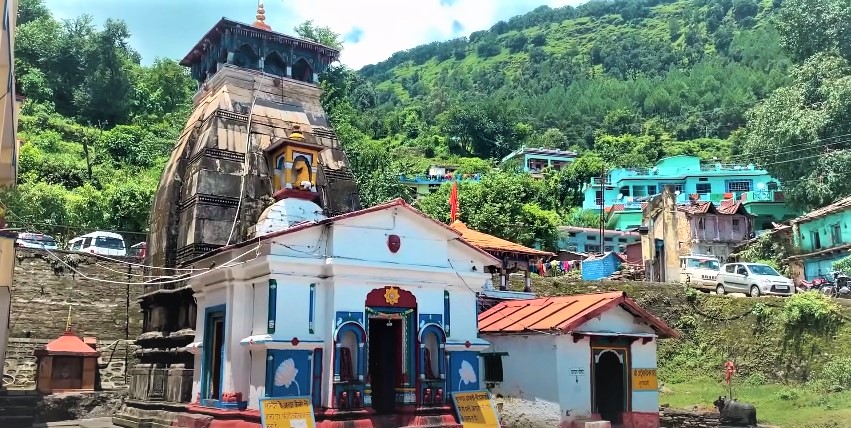When you plan a pilgrimage to Kedarnath, chances are someone will whisper, “Don’t forget to stop at Guptkashi.” And trust me—you shouldn’t. This temple town, nestled in the Garhwal Himalayas, isn’t just a pit stop on the Chota Char Dham route. It’s a destination with its own soul, wrapped in myths, mountain views, and an unmistakable aura of Lord Shiva’s presence.
I’ve been to plenty of Himalayan temples, but Guptkashi left a mark on me—not because of its size, but because of the stories that seem to hang in the air, waiting to be heard. Let’s dive into its world together.
The Meaning Behind the Name
The word “Guptkashi” literally means Hidden Kashi. Local legends say that after the Kurukshetra war, when the Pandavas sought Shiva to atone for their sins, he chose to remain hidden here. Later, he reappeared in Kedarnath in the form of a bull.
The link with Kashi (Varanasi) is also spiritual. Devotees believe a darshan here carries the same merit as visiting the great Kashi Vishwanath in Varanasi. For pilgrims who can’t travel to the Ganga plains, Guptkashi becomes a blessing in itself.
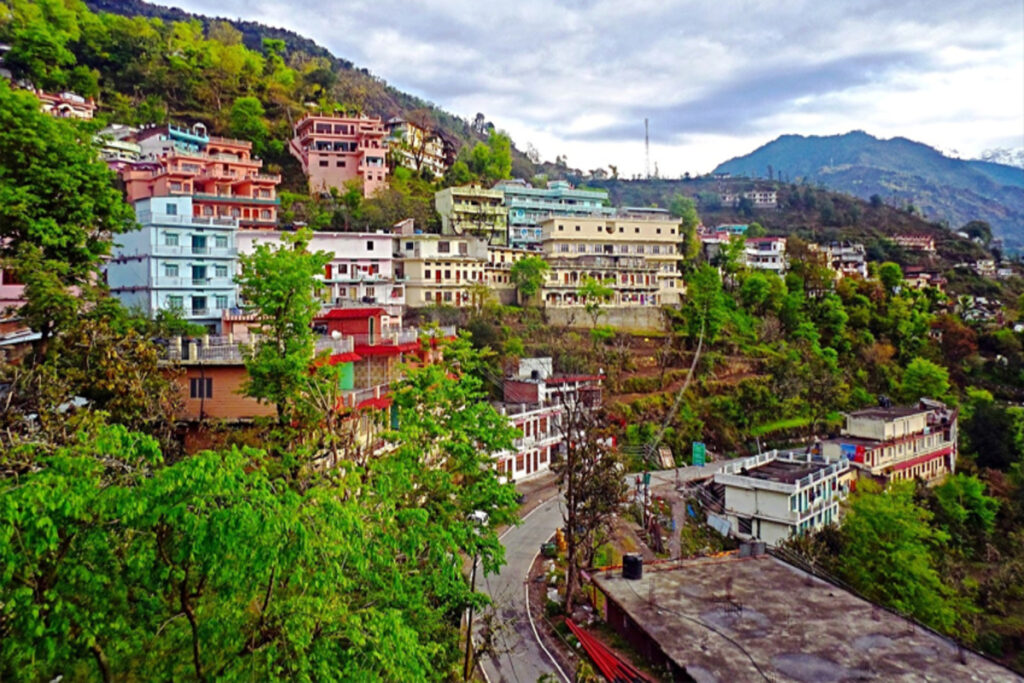
The Vishwanath Temple: Heart of Guptkashi
The main shrine here is the Vishwanath Temple, dedicated to Lord Shiva. Its stone structure reflects a typical North Indian temple style—nothing overly elaborate, yet quietly powerful.
What struck me most was the sense of intimacy. Unlike massive temple complexes where you feel like part of a crowd, here you can actually pause, breathe, and feel the presence of the deity. I watched pilgrims pour water from the Mandakini River over the lingam, their prayers echoing softly in the small sanctum. It felt personal, like Shiva was listening.
The Ardhnarishwar Temple
A short walk from Vishwanath is the Ardhnarishwar Temple, where Shiva and Parvati are worshipped in one form. Half male, half female—the ultimate cosmic balance.
Standing in front of this shrine, I couldn’t help but reflect: the Himalayas themselves embody this balance. Fierce yet nurturing, harsh yet beautiful. No wonder the Ardhnarishwar form is honored here.
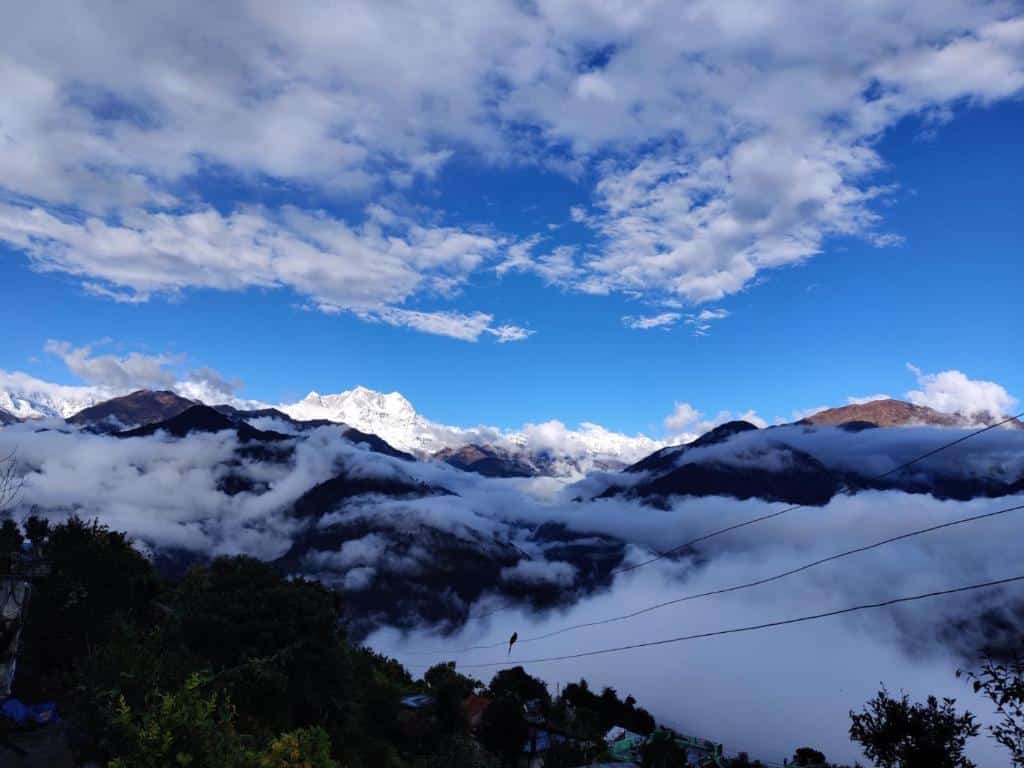
The Legend That Lives in Every Corner
Every temple in Uttarakhand has a story, but Guptkashi’s is particularly moving. The tale of Shiva hiding from the Pandavas isn’t just mythology—it’s about forgiveness, humility, and divine play. Locals tell it with such conviction that you almost expect to see the Pandavas walking the same stone paths you’re on.
An elderly priest I spoke with put it beautifully: “Devotion is a journey, not a destination. Even the Pandavas had to search before finding Shiva. That’s why Guptkashi is so important—it teaches patience.”
The Backdrop: Chaukhamba Peaks
Now, let’s talk about the scenery. Guptkashi sits against the backdrop of the Chaukhamba mountain range. At sunrise, the snow peaks glow golden; by evening, they turn a soft pink. Standing on the temple steps, watching the peaks change colors, I realized why people call the Himalayas a form of divinity themselves.
If you’re a photographer—or even just someone who loves watching skies—you’ll find Guptkashi magical.
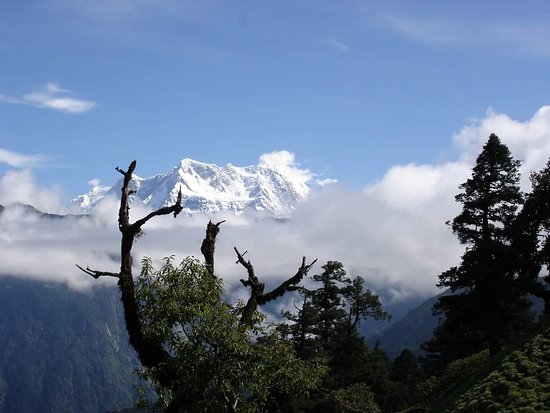
Everyday Life in a Temple Town
One thing I love about Himalayan towns is how sacred and ordinary coexist. Around the temple, you’ll see:
- Children running to school with their bags.
- Women selling puja flowers alongside baskets of apples and walnuts.
- Travelers haggling for woolens or buying packets of prasad.
- Priests chanting shlokas in the background.
The result? A town that feels alive, rooted in devotion but pulsing with daily life.
Festivals and Traditions of Guptkashi
Guptkashi isn’t just a temple town you stop at on the way to Kedarnath. If you linger long enough, you’ll notice that its real charm lies in the way spirituality, festivals, and everyday life come together in the shadow of the Himalayas. The locals here don’t just celebrate; they live their faith in vibrant, deeply rooted traditions that stretch back centuries.
Whether it’s the rhythm of temple bells at dawn, the grand processions of deities, or the quiet rituals performed by families, every aspect of life here feels tied to the divine. Let me walk you through the festivals and traditions that make Guptkashi more than just a point on the pilgrimage map.
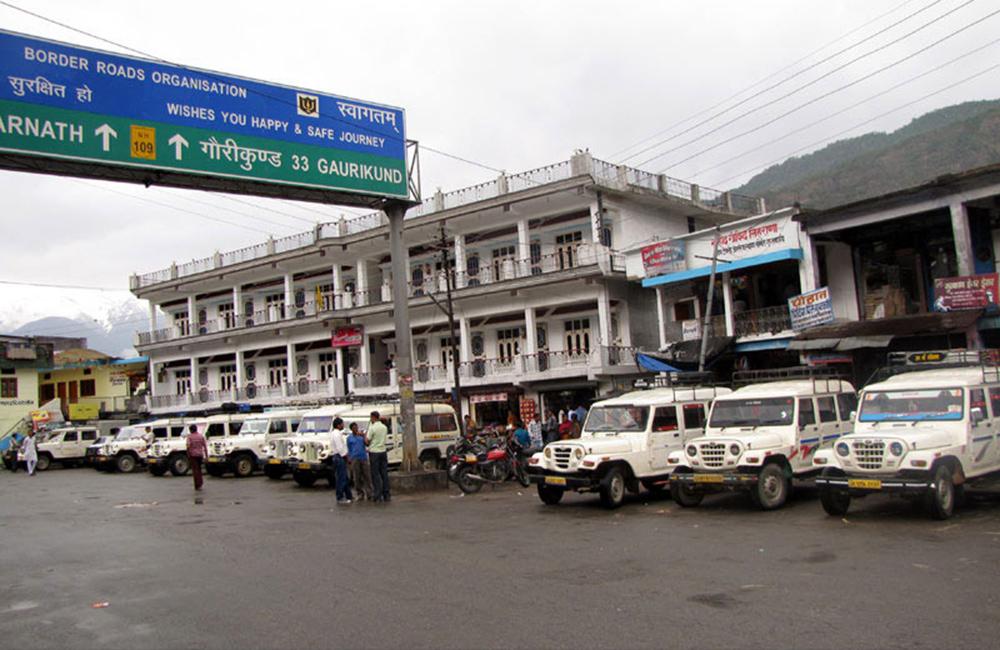
The Shivratri Celebrations: A Night of Divine Union
In Guptkashi, Maha Shivratri is the biggest festival of the year. Imagine the entire temple complex lit up with rows of flickering lamps, the air thick with the scent of incense and fresh marigolds. Pilgrims arrive from nearby villages and distant towns, carrying offerings of bel leaves, milk, and ghee.
As the night unfolds, the chants of “Om Namah Shivaya” echo through the valleys. Local priests narrate the story of Shiva and Parvati’s cosmic marriage, which legend says has deep roots in this region. The highlight is the midnight abhishek, where milk and honey are poured over the lingam in the Vishwanath Temple.
For travelers, being in Guptkashi during Shivratri isn’t just about witnessing a festival—it feels like becoming part of an ancient, living myth.
Kedarnath Yatra and Seasonal Traditions
Every year when the Kedarnath Yatra opens, Guptkashi springs to life. The town becomes a staging point for pilgrims, but what’s often missed is the local tradition of welcoming the deity of Kedarnath as it makes its ceremonial journey from Ukhimath to the high-altitude shrine.
During this time, villagers decorate their homes with flowers, the roads are filled with devotional songs, and small markets set up to provide offerings and essentials for pilgrims. This isn’t just a journey to Kedarnath; it’s a moving festival that transforms the entire Mandakini Valley.
And when the deity returns in winter, Guptkashi once again witnesses processions and prayers, symbolizing the cyclical rhythm of life in the Himalayas.
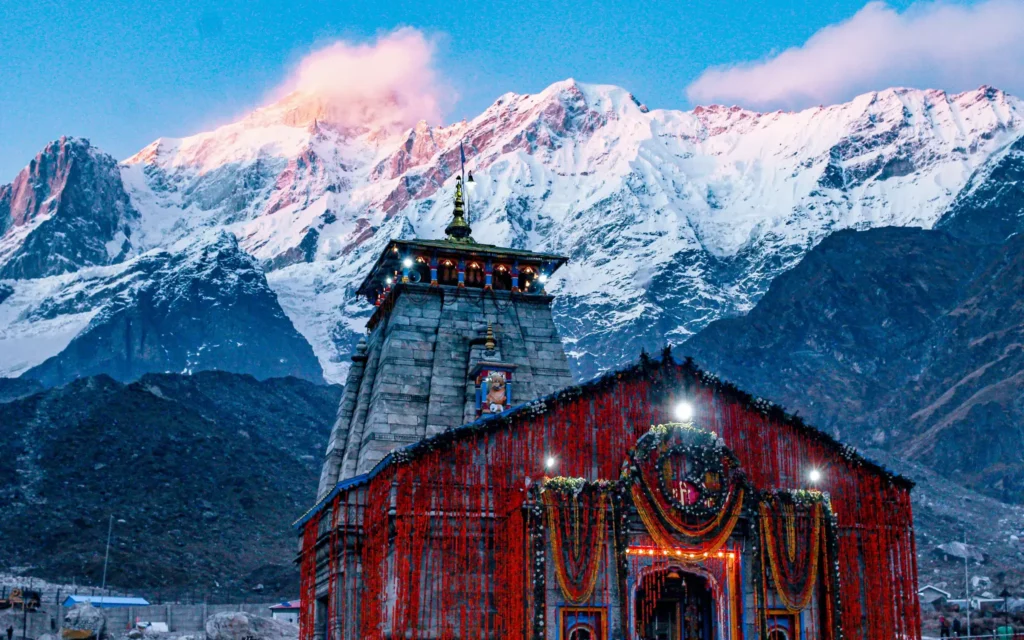
Everyday Rituals: A Festival in Itself
One thing I noticed in Guptkashi is that daily life itself feels like a festival. Early in the morning, you’ll see women drawing rangolis outside their homes, while the sound of conch shells and temple bells marks the beginning of prayers.
The Vishwanath Temple is never really quiet. Priests conduct daily aartis where oil lamps are circled before the lingam, their flames dancing like tiny stars against the stone walls. Locals believe attending the evening aarti brings peace and prosperity—not just for individuals but for the entire community.
For a traveler, joining even one of these rituals feels like sharing a deeply personal moment with the town.
Harvest Festivals: When Nature Joins the Prayer
Because Guptkashi sits in an agrarian belt, harvest seasons double as festivals. During Makar Sankranti and Baisakhi, locals offer the first grains, vegetables, or fruits of the season to Lord Shiva before enjoying them at home.
I once sat with a family during Sankranti, where they cooked simple but delicious dishes of rice, jaggery, and ghee. What struck me was how seamlessly they wove gratitude into their daily lives—acknowledging that every crop, every stream of water, is a blessing from the mountains.
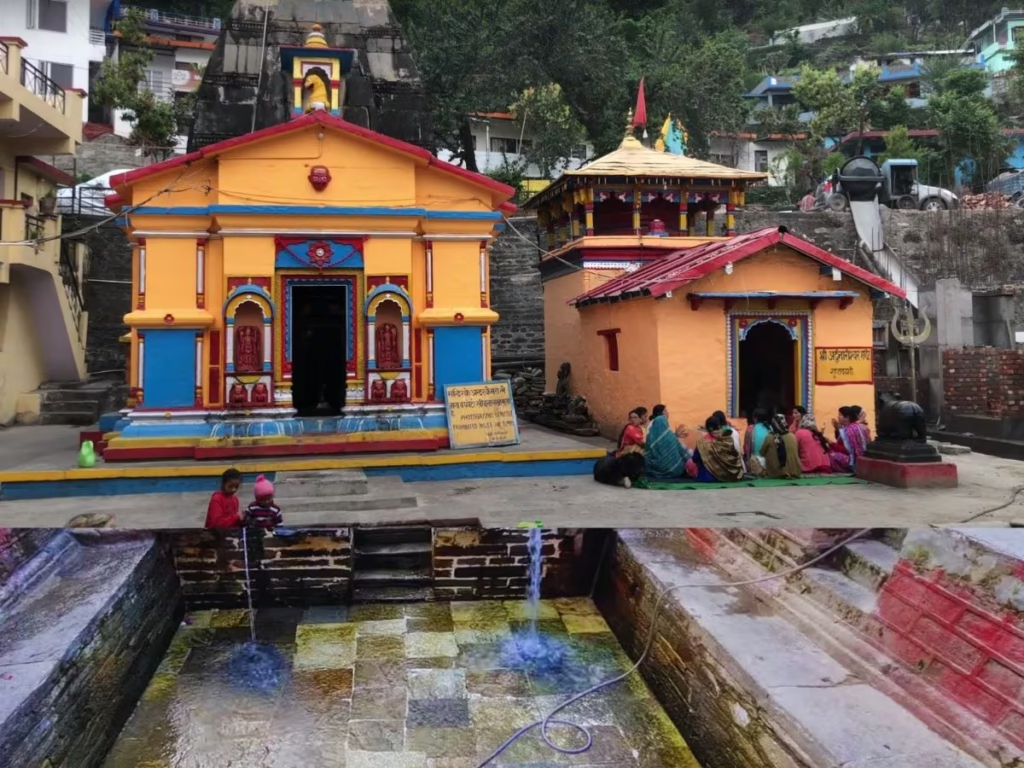
Weddings and Community Rituals
Traditional weddings in Guptkashi are festivals in their own right. The rituals often begin with prayers at the Vishwanath Temple, invoking Shiva and Parvati’s blessings. Villagers gather with drums, flutes, and folk songs, transforming the event into a community celebration.
These weddings reflect the deeper tradition of togetherness. It’s never just about two individuals—it’s about the entire village coming together, reinforcing bonds that are as strong as the mountains themselves.
Guptkashi as a Pilgrim’s Halt
Guptkashi plays a practical role too. It’s a common base for pilgrims traveling to Kedarnath. The trek from Gaurikund to Kedarnath is tough, so many spend a night here to rest and acclimatize.
When I stayed overnight, the guesthouse was buzzing with yatris. Some were anxious about the climb, while others were excited to finally walk the trail. Conversations over cups of chai created a sense of community—it felt like we were all part of the same spiritual journey.
Nearby Attractions
If you’re in Guptkashi, there are a few nearby gems worth exploring:
- Manikarnika Kund: A sacred water tank where the streams from Ganga and Yamuna are believed to meet. Locals consider it a powerful tirtha.
- Gaurikund: The base camp for Kedarnath, associated with the legend of Goddess Parvati’s penance to win Shiva’s love.
- Triyuginarayan Temple: Said to be the place where Shiva and Parvati married. The eternal flame at this temple has been burning for centuries.
These spots add layers to your journey, turning a simple visit into a tapestry of legends and experiences.
Practical Travel Tips
- Best Time to Visit:
- Summer (May–June): Pleasant, perfect for darshan and onward journey.
- Monsoon (July–August): Avoid—landslides are common.
- Autumn (September–October): Crystal-clear skies, great mountain views.
- Winter (Nov–April): Too cold, most routes close.
- How to Reach:
- Nearest Airport: Jolly Grant, Dehradun (about 190 km).
- Nearest Railhead: Rishikesh (approx. 168 km).
- From both, you’ll find taxis and buses heading up to Guptkashi.
- Stay Options:
Guesthouses, dharamshalas, and small hotels abound. If you want something peaceful, look for stays a little outside the main bazaar. - Food:
Expect simple vegetarian meals—dal, sabzi, roti. Don’t miss hot aloo parathas in the morning or steaming bowls of maggi in the evenings.
Nearby Attractions of Guptkashi
Most travelers hear of Guptkashi as a halt on the way to Kedarnath. But if you have a curious spirit and an extra day or two, this temple town opens doors to nearby destinations that are just as fascinating as the shrine itself. From myth-laden temples to serene valleys, the surroundings of Guptkashi weave together nature, spirituality, and Himalayan culture in a way that lingers with you long after you’ve left.
Here’s a look at the best places to explore around Guptkashi.
1. Triyuginarayan Temple – The Eternal Wedding Flame
If there’s one spot near Guptkashi that truly feels like stepping into mythology, it’s Triyuginarayan Temple, about 25 km away. This ancient shrine is believed to be the very place where Lord Shiva and Goddess Parvati married, with Lord Vishnu himself acting as the divine witness.
What makes it even more surreal is the eternal flame that burns in the courtyard, said to have been lit at the time of the wedding and still glowing to this day. Sitting by that fire, you don’t just feel like a tourist—you feel like a witness to history that goes back thousands of years.
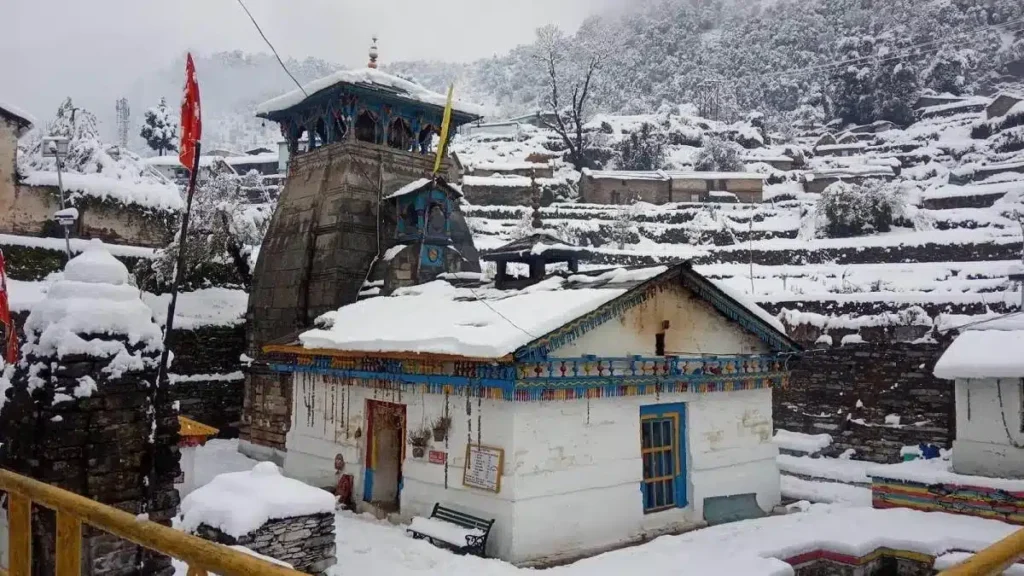
2. Ukhimath – Winter Home of Kedarnath
Around 12 km from Guptkashi lies Ukhimath, a small but important pilgrimage site. When heavy snowfall shuts down Kedarnath in winter, the deity’s idol is brought here and worshipped.
Visiting Ukhimath is like catching the “off-season Kedarnath experience.” The temple here may not be as grand, but the devotion is just as intense. Plus, the surrounding landscape—rolling meadows and panoramic Himalayan views—makes it a great stop for photography lovers.
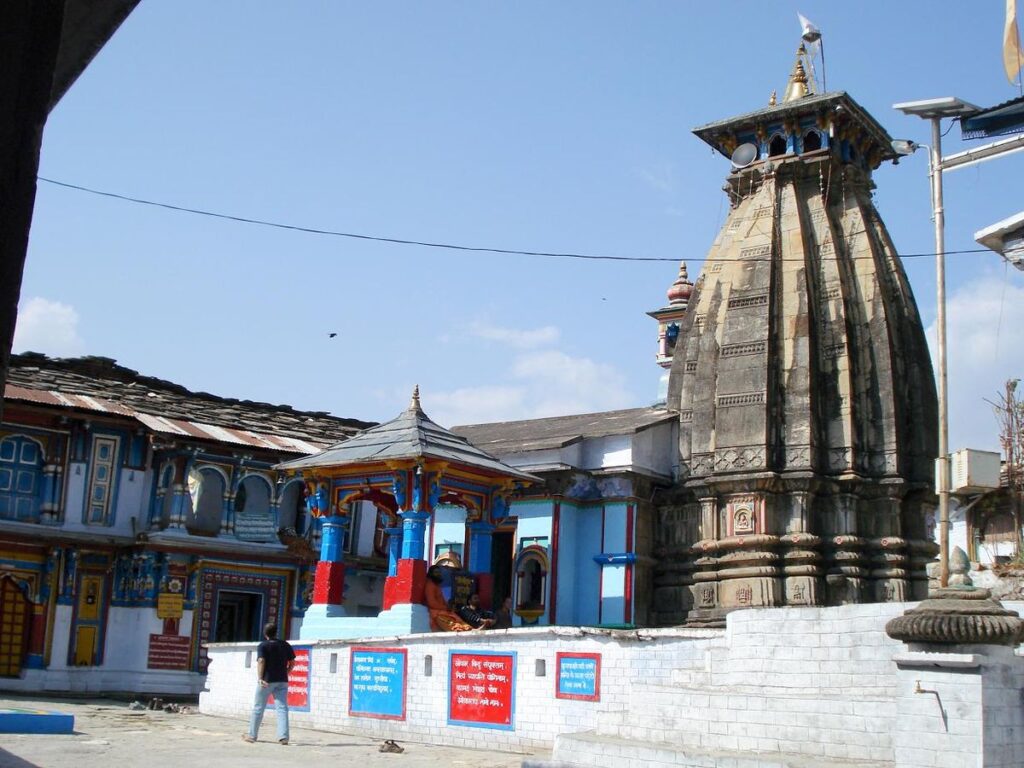
3. Gaurikund – The Gateway to Kedarnath
Drive about 34 km from Guptkashi and you’ll find yourself at Gaurikund, the official starting point of the Kedarnath trek. But don’t think of it as “just the base.” This spot has a story too.
According to legend, Goddess Parvati performed penance here to win Lord Shiva’s love. The hot water spring in Gaurikund is also considered sacred, and pilgrims often take a dip before beginning their journey.
Even if you’re not trekking to Kedarnath, a visit to Gaurikund helps you soak in the atmosphere of anticipation and devotion that fills the air.
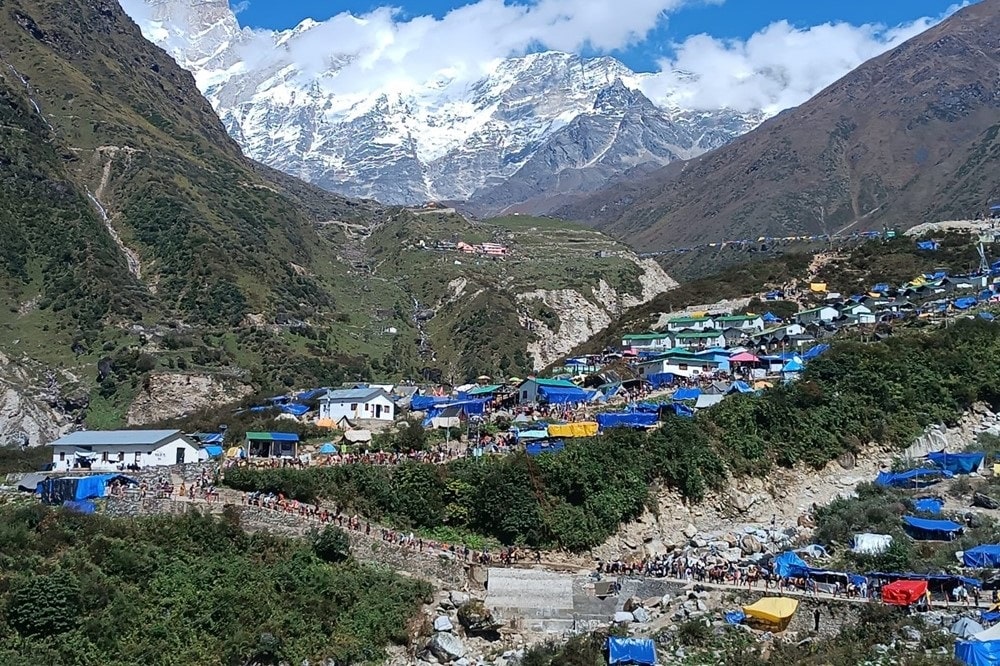
4. Chopta – The Mini Switzerland of Uttarakhand
If Guptkashi feels like a spiritual haven, Chopta, just 45 km away, feels like nature’s playground. Known as the “Mini Switzerland of Uttarakhand,” Chopta is a meadow that looks straight out of a painting—rolling grasslands, dense forests, and the majestic Chaukhamba peaks looming in the background.
It’s also the base for the famous Tungnath and Chandrashila trek. Tungnath is the highest Shiva temple in the world, while Chandrashila offers a panoramic 360° view of some of the tallest Himalayan peaks. A visit here makes you realize how beautifully spirituality and adventure coexist in Uttarakhand.
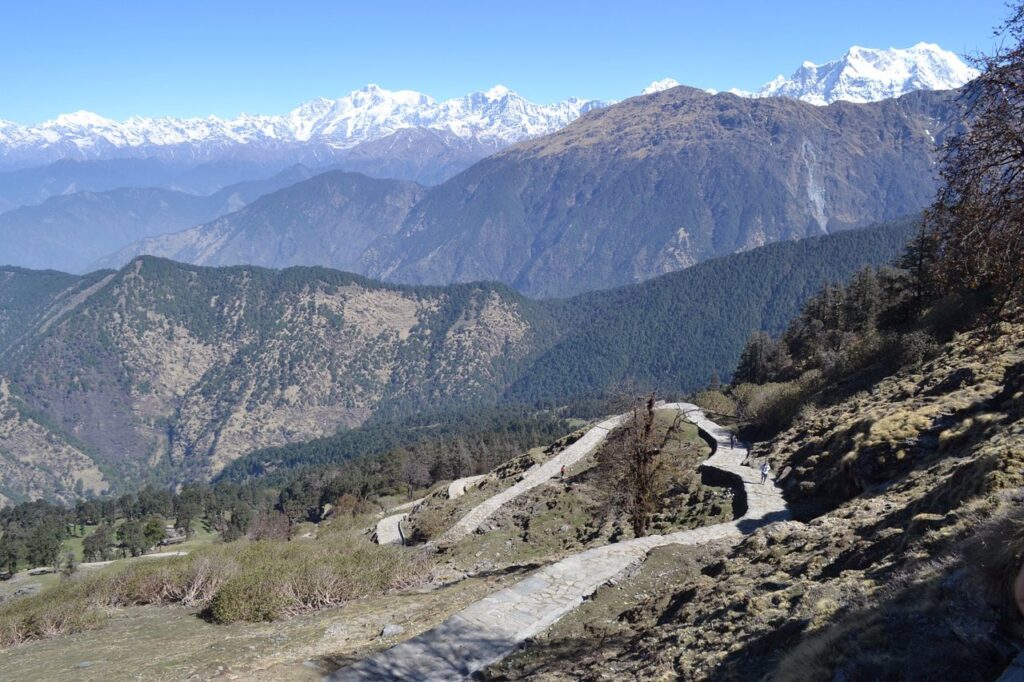
5. Deoria Tal – A Lake of Legends
A short trek from Chopta leads you to Deoria Tal, a high-altitude lake that seems almost magical. On a clear day, the waters reflect the Chaukhamba peaks so perfectly that it feels like two worlds—one real, one mirrored—meeting in silence.
Locals say the Pandavas once visited this lake, and the Mahabharata links it to the legendary Yaksha Prashna story. Sitting by its shores, watching the ripples, you can easily lose track of time.
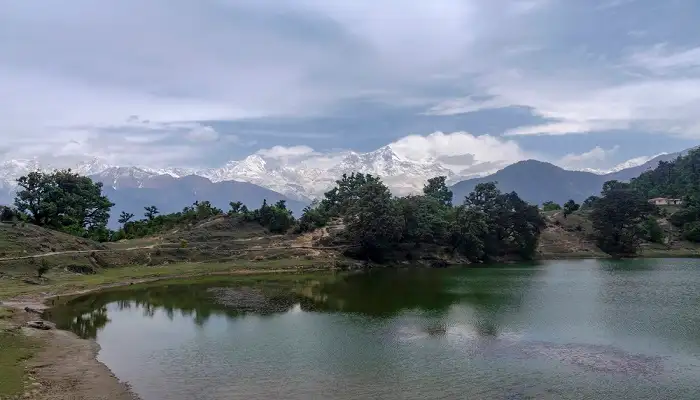
6. Kalimath – Shakti Peeth of the Himalayas
About 20 km from Guptkashi lies Kalimath, one of the most revered Shakti Peethas in India. Unlike other temples, the deity here—Kali Mata—is worshipped in an unusual way. Instead of an idol, the goddess is worshipped as a natural form of energy, symbolizing her untamed power.
The temple sits on the banks of the Saraswati River, surrounded by stunning Himalayan scenery. If Guptkashi is about Shiva’s calm energy, Kalimath is about Shakti’s raw force. Visiting both gives you a sense of balance.
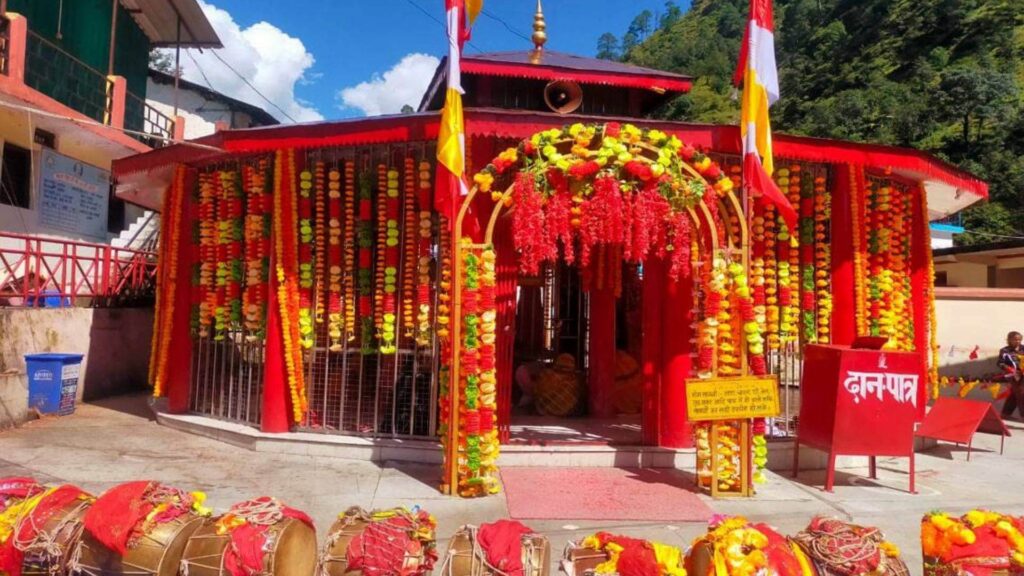
7. Mandakini Valley – A Walk Through Beauty
Even if you don’t head to any particular destination, just exploring the Mandakini Valley around Guptkashi is rewarding. The river flows steadily, cutting through terraced fields, small villages, and pine forests.
I once took a slow walk along the riverbank, chatting with locals who were harvesting potatoes and collecting firewood. That walk gave me as much peace as any temple visit—reminding me that the Himalayas are as much about people as they are about gods.
Why Guptkashi Matters
It’s easy to think of Guptkashi as “just another temple town.” But pause, and you’ll see it differently. This is where myth meets mountain. This is where pilgrims learn patience before their toughest climb. This is where you realize that the journey itself is as sacred as the destination.
For me, Guptkashi was not just a stopover—it was a reminder. A reminder that spirituality doesn’t always announce itself in grand gestures; sometimes, it hums quietly in a small courtyard, under the gaze of snow-clad peaks.
Closing Thought
If you ever find yourself on the road to Kedarnath, don’t rush through Guptkashi. Stay a while. Walk through its temples, chat with its priests, sip tea at a roadside stall, and watch the sun rise over Chaukhamba.
Because in Guptkashi, you don’t just visit a temple—you live a story. And that story will travel back with you, long after you’ve left the mountains behind.
Frequenlty Asked Quetions (FAQ’s)
Where is Guptkashi Temple located?
It is situated in the Rudraprayag district of Uttarakhand, on the route to Kedarnath.
Which deity is worshipped at Guptkashi Temple?
The temple is dedicated to Lord Shiva.
Why is Guptkashi Temple significant?
It is believed that the Pandavas sought Lord Shiva’s forgiveness here after the Kurukshetra war.
What is the meaning of Guptkashi?
The name means “Hidden Kashi,” as it is linked to the holy city of Kashi (Varanasi).
What is the architecture of the temple like?
The temple resembles the Vishwanath style with a stone spire and intricate carvings.
Are there other shrines within the temple?
Yes, it also houses Ardhnarishwar and Vishwanath shrines.
What are the temple timings?
It generally opens early morning and closes by evening with regular aarti.
What is the best time to visit Guptkashi Temple?
May to October is ideal, coinciding with the Char Dham Yatra season.
How can one reach Guptkashi Temple?
It is accessible by road from Rishikesh, Haridwar, and Rudraprayag; nearest railway station is Rishikesh.
Is Guptkashi linked to Kedarnath?
Yes, it lies en route to Kedarnath and is often visited by pilgrims before the Kedarnath trek.

